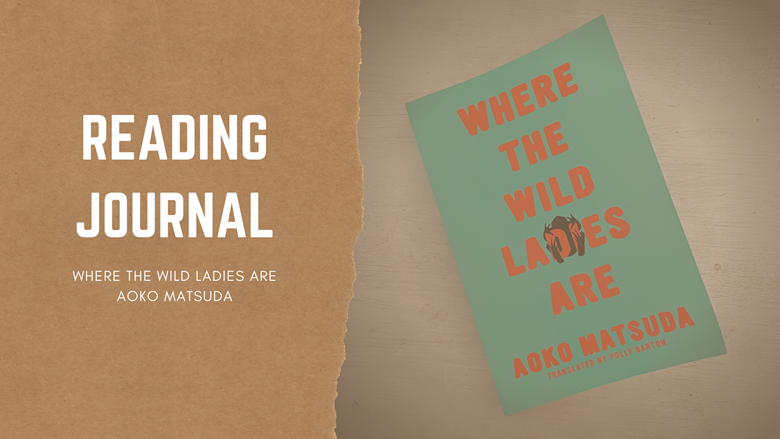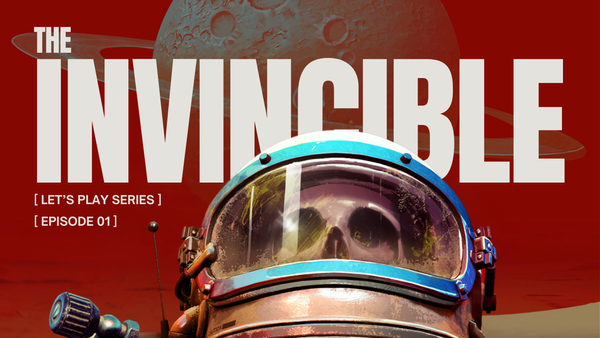Where The Wild Ladies Are — Aoko Matsuda | Reading journal

I love short stories, and I love myth retellings — if you, too, love both of those things, then you’ll have a blast with Where the Wild Ladies Are. It’s a collection of retellings of Japanese myths, and set in Japan, using many of the historical locations as a backdrop.
What I enjoyed especially is how Matsuda uses various perspectives and narrative styles to tell these stories; as well as keeping the stories interconnected so they all take place in the same universe. “The Jealous Type” does this in an extraordinary way. It’s one of the stories that first stick out because of its POV (second person singular, speaking directly not to the reader, but to a character), and when the punchline clicks and it becomes clear how this story connects to the wider universe, it’s a genius twist. (The content of the story itself, by contrast, is dark.) I don’t want to spoil it, so I can’t explain in any more detail why it’s so good, which pains me. Combined with the story’s title, though, perhaps you can guess.
All of these stories — and the people and myths the retellings connect — have death at their centre. If the protagonist isn’t dead, then someone is; but that state does not deny them contact with the living. Some stories are romantic and/or bittersweet, others are just genuinely adorable. Some, satisfyingly tragic and cathartic.
Where there’s death, there’s love: love lost, love remembered, love won, love squandered. Platonic, romantic, familial, love in all its forms.
Most characters pop up more than once, and it’s so satisfying, every time, to meet someone again and learn just a little more about them. Just a smidge… there’s still plenty of mystery surrounding what, exactly, half of these characters actually do. But we know a little bit about what’s important to them, especially in how they deal with the living (or the dead).
There is nostalgia, and longing, but also a sense of moving on in many of the stories. There is kindness, so much of it; but trickers, too, and cruelty. It sits in the cracks between the stones of old wells and temples, castles. Best of all, however, there is transformation. The stories themselves are a transformative act, taking myths and telling them anew, but the women, too, transform themselves. In my head, many of the characters in this collection feel in conversation with Clarice Lispector’s Joana in Near to the Wild Heart, and with Keiko in Sayaka Murata’s Convenience Store Woman. They have such rich inner lives that they internalise almost entirely in order to be accepted. But in Where the Wild Ladies Are, there is liberation of these inner selves. All of this comes from myth, and some of it comes from horror. All (or almost all) of these women… are ghosts.
And Mr Tei respects their extraordinary talents. There’s that wonderful component of the afterlife being an office job (provided you are chosen), with some of the corporate oddities — and even top secret Research + Development! — that that entails. But the wonder is that it’s not just an office: it’s a factory, where products are made (by yet living people) for the living. Incense, for instance, that is supposed to let the left behind communicate with a deceased loved one. The dead, under the careful guidance of Mr Tei, care for the living.
They learn to care for themselves, too: women, living and dead, who cast off the shackles of beauty standards and just look, wear, and do whatever the hell they want. “Having a Blast” is appropriately titled that way. Its protagonist, a woman who died young, left a husband and a kid, and found she didn’t mind so much when her husband remarried quite soon after, is delighted that women on earth have finally caught up with her style. She first mourned her shorn, bald head after burial, but now she keeps her buzzcut, and she’s been wearing ripped jeans and combat boots longer than we’ve all been alive. What took us so long to discover punk? Her husband and his second wife are dead now, too, and I’m kind of rooting for a ghostly OT3. Anyhow—
Where the Wild Ladies Are is about women who do things their own way. Who want to break free from stereotypes, bad relationships, expectations that do not suit them, and, sometimes, their own histories. Some find the freedom to do so only in death, others receive the help they need from the other side. Be that the single mother who is looked after by a ghostly matron carrying sweets for her child, or the young shopkeeper who may or may not be the spirit of a well who meets a dashing young man and finally gets to decide for herself. There is revenge in these stories, too: women who were wronged and are now transformed.
Each story on its own is wonderfully strange, and when they all come together, the collection becomes so rich. But nothing fades into each other, even though the retellings are short, they let you connect with each character on their own, so deftly woven is each piece.
My absolute favourite: “Quite a Catch.” It’s queer, marvellously tender, and it gives a young woman and her supernatural girlfriend a happy ending. Something we desperately need more of.




